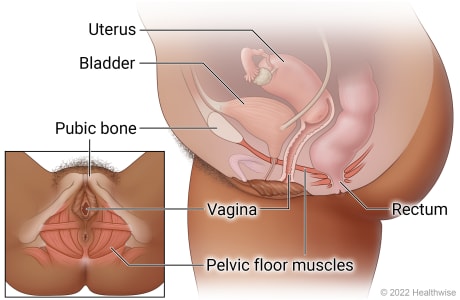Overview
Kegel exercises make your pelvic floor muscles stronger. These muscles control your urine flow and help hold your pelvic organs in place.
Doctors often prescribe Kegels for:
- Stress incontinence. This means leaking urine when you laugh, cough, sneeze, jog, or lift something heavy.
- Urge incontinence. This is a need to urinate that is so strong you can't reach the toilet in time.
- Pelvic floor weakness. Age, being overweight, pregnancy, childbirth, and surgery are all things that can weaken pelvic floor muscles. And that can cause urine control problems. It can also result in uterine prolapse. Doing daily Kegels during and after pregnancy may prevent or help treat prolapse.
How to do Kegel exercises

- Squeeze your muscles as if you were trying not to pass gas. Or squeeze your muscles as if you were stopping the flow of urine. Your belly, legs, and buttocks shouldn't move.
- Hold the squeeze for 3 seconds. Then relax for 5 to 10 seconds.
- Start with 3 seconds, then add 1 second each week until you are able to squeeze for 10 seconds.
- Repeat the exercise 10 times per session. Try to do 3 to 8 sessions a day.
Kegels work best when done on a regular schedule. Talk to your doctor if you don't notice improvement after doing Kegels for 3 or 4 months.
Don't make it a practice to do Kegels while urinating. Over time, doing this could hurt your bladder.
If doing these exercises causes pain, stop doing them and talk with your doctor.
Credits
Current as of: October 25, 2024